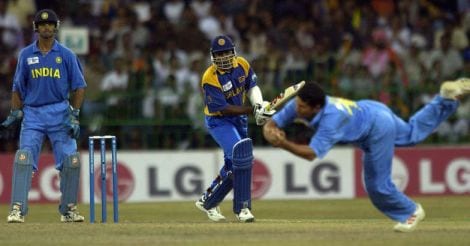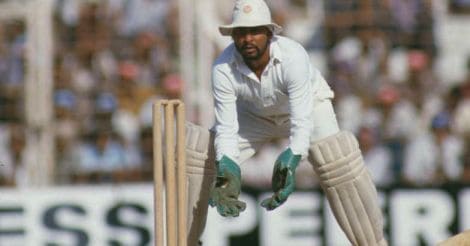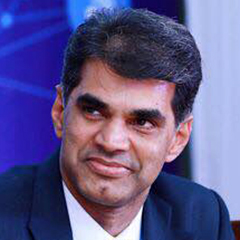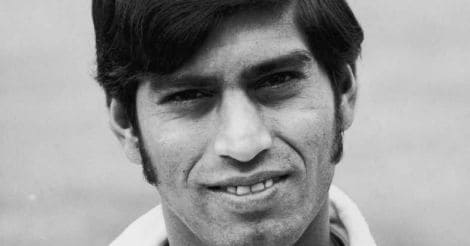Though cricket is a game involving three broad skills, fielding has invariably been considered as a poor cousin when compared to batting and bowling. Players get selected based on their prowess with the bat and ball; seldom would one find anyone making it to the squad solely on his ability as a fielder. Match reports in media would highlight the performance of batsmen and bowlers eulogizing those who scored centuries and picked up five wickets in an innings while little mention is made about the player who chased the ball tirelessly saving singles and boundaries.
The contribution of fielders to the side is in no way lesser than that of batsmen or bowlers. A bowler becomes effective only when supported by good fielding and catching. A dropped catch not only demoralizes the bowler, but might also pave the way for the batsman to make big runs. A sharp fielding side denies easy runs to the batsmen and forces them to take chances, thus increasing the possibility of them making mistakes. Yet, despite all these proven facts, it is only the exception rather than the rule for a player to be selected or rewarded for his merits as a fielder alone.
Read also: Sreesanth - more sinned against than sinning
Check out our in-depth coverage of IPL 2017
One of the good aspects of limited overs cricket is its emphasis on fielding. Long back when Test matches were the only contests between countries, it was easy to hide a slacker on the field. But with the advent of limited overs cricket such luxuries became history and it became mandatory that all eleven members were good fielders. This has raised the general standards of fitness and quality of fielding to levels unimaginable two decades ago.
It was this thought that prompted yours truly to think about drawing up an Indian eleven based solely on fielding abilities. This is neither an easy task nor one that would satisfy all. Comparing players who played in different eras is in itself challenging. Further one has to go by written documents to assess the individual merits of fielders during the earlier times. With these self confessed handicaps I am starting my exercise. So here goes my selection.
1. Eknath Solkar - There cannot be any dispute that Solkar remains India’s best fielder ever. In fact he would be the only player who was selected to the national squad solely on the basis on his fielding and catching abilities close to the bat. His presence at forward short leg gave an added edge to the Indian spin triumvirate as he caught anything that touched the bat - from faint edges to mistimed pulls. He was brilliant in other positions as well, even in the deep. He is also the only fielder who picked up more catches than number of innings when he was on field - 53 catches in 50 innings.
 Suresh Raina, right, reacts after taking a catch to dismiss David Warner of Australia during an ODI at the Melbourne Cricket Ground on January 18, 2015. Getty Images
Suresh Raina, right, reacts after taking a catch to dismiss David Warner of Australia during an ODI at the Melbourne Cricket Ground on January 18, 2015. Getty Images2. Suresh Raina - The best of the lot among present day cricketers, Raina, like Solkar, is primarily a fielder who is best close to the bat. He is exceptionally quick within the circle in the shorter formats of the game and moves with the agility of a panther. He possesses a strong and accurate throwing arm which makes him a dangerous opponent when attempting a quick run.
3. Mansur Ali Khan Pataudi - He was the first captain who insisted that a player should be a good fielder irrespective of his worth as a batsman or bowler. Pataudi was the best fielder at cover point during his time and the sight of him swooping down on the ball, picking it and throwing accurately to the gloves of the wicketkeeper in one graceful motion was as beautiful as the elegant lofted straight drives that was his specialty.
4. Rahul Dravid - India’s most successful catcher, Dravid was as dependable in the slips as he was with the bat in front of the stumps. His famed powers of concentration lent an extra sharpness while standing long hours in the slips where he rarely dropped a catch. He had a wonderful sense of anticipation which ensured that he was always in position for the edge from the bat and seldom had to dive for the ball.
5. Kapil Dev - One of the most natural cricketers ever to set foot on a cricket field, there was little that Kapil could not do with the bat and ball. A wonderfully athletic fielder blessed with a big pair of hands, he could patrol the deep and be equally effective close to the wicket as well. The catch that he took to dismiss Viv Richards in the 1983 World Cup final when he sprinted nearly 30 yards with his back to the pitch would stand out as one of the best ever in Indian cricket history.
6. Yuvraj Singh - The transformation of Indian side from a laid back bunch of cricketers to a aggressive side during early part of first decade of 21st century was caused in large measure by the fielding revolution spearheaded by Yuvraj. Such was his effect on the field that it used to be said that he was worth quite a few runs even before he went out to bat. Like Raina, he too was blessed with a strong and accurate throwing arm and could field anywhere in the circle with equal ease.
7. Mohammad Azharuddin - He was easily the best Indian fielder of his generation. He started in the outfield where he made his mark as the best cover point since Pataudi. Subsequently he moved to the slips where his natural instincts made him the most reliable catcher in that position. He remained a world class fielder till he was forced to leave cricket under a cloud.
8. Hemu Adhikari - During the 1950s, an era when Indian players thought it was below their dignity to bend down and field a ball, Adhikari was an exception. Though he played in only 21 Tests, Adhikari made his impact as a fielder of top quality during this short span. Adhikari played his role as the highly successful manager of Indian side during early 1970s where his focus on fielding yielded excellent results.
 Sachin Tendulkar takes a fine return catch to dismiss Sri Lanka's Mahela Jayawardene in the final of the ICC Champions Trophy in Colombo on September 29, 2002. Getty Images
Sachin Tendulkar takes a fine return catch to dismiss Sri Lanka's Mahela Jayawardene in the final of the ICC Champions Trophy in Colombo on September 29, 2002. Getty Images9. Sachin Tendulkar - Like Kapil before him, there was little that Tendulkar could not do on a cricket field. While his exploits with bat, and to a much lesser extent the ball, have been well documented, his performance as a fielder has not been given its due by the chroniclers of the game. It is to the credit of Tendulkar that he continued to field in the deep right till the end of his career. He rarely misfielded, one cannot remember him dropping a catch and his throwing arm was among the best in the game.
10. Ajit Wadekar - He was the best slip fielder during the era when Indian attack consisted solely of spinners. Despite his languid appearance Wadekar could pounce on even half chances with ease and elegance, thus adding an extra sharpness to the bowling attack. He also possessed an accurate throwing arm which he used to good effect when fielding in the deep.
No playing eleven can be complete without a wicketkeeper and the last position in this squad should belong to the representative from the breed of stumpers. For this place I would choose Syed Kirmani solely for his wicketkeeping skills; he could stand up to the wicket and effect leg side stumping when B. S. Chandrasekhar was bowling and dive to pounce catches in front of slips while standing back to Kapil. There have not been any other wicketkeeper so adept at keeping to both spinners and medium-pacers, before or after him.
 Syed Kirmani. File photo: Getty Images
Syed Kirmani. File photo: Getty ImagesThis completes my list of eleven best fielders who have donned India colors. There are plenty of brilliant fielders who do not find a place in the above list - Ajay Jadeja, Mohammad Kaif, S. Venkataraghavan, and Ajinkya Rahane to name a few. As I confessed in the beginning this is my eleven and selection has been done in a subjective manner. But no one would dispute the contributions of each of these individuals to Indian cricket and to the unglamorous arena of fielding, in particular.
(The author is a former international umpire and a senior bureaucrat)

























 Eknath Solkar. File photo: Getty Images
Eknath Solkar. File photo: Getty Images